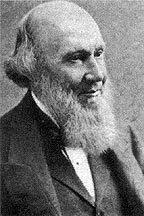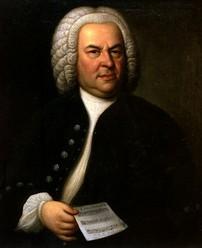Planning worship?
Check out our sister site, ZeteoSearch.org,
for 20+ additional resources related to your search.
- |
User Links
Search Results
Brood O'er Us
Author: Mary Baker Eddy Appears in 11 hymnals First Line: Brood o'er us with Thy shelt'ring wing Used With Tune: LILY
Brood O'er Us
BROTHER JAMES' AIR
Appears in 72 hymnals Composer and/or Arranger: James Leith Macbeth Main; Robert Rockabrand Tune Key: C Major Incipit: 13515 61543 11711 Used With Text: Brood O'er Us
BROTHER JAMES' AIR
Brood o'er Us with Thy Sheltering Wing
Author: Mary B. Eddy Hymnal: The Cyber Hymnal #651 Meter: 8.6.8.6.8.8 Lyrics: 1. Brood o’er us with Thy sheltering wing,
’Neath which our spirits blend
Like brother birds, that soar and sing,
And on the same branch bend.
The arrow that doth wound the dove
Darts not from those who watch and love.
2. If thou the bending reed would break
By thought or word unkind,
Pray that His Spirit you partake,
Who loved and healed mankind:
Seek holy thoughts and heavenly strain,
That make men one in love remain.
3. Learn, too, that wisdom’s rod is given
For faith to kiss, and know;
That greetings glorious from high heaven,
Whence joys supernal flow,
Come from that Love, divinely near,
Which chastens pride and earthborn fear.
4. Through God, who gave that word of might
Which swelled creation’s lay:
Let there be light, and there was light.
What chased the clouds away?
’Twas love whose finger traced aloud
A bow of promise on the cloud.
5. Thou to whose power our hope we give,
Free us from human strife.
Fed by Thy love divine we live,
For Love alone is life;
And life most sweet, as heart to heart
Speaks kindly when we meet and part. Languages: English Tune Title: WESSEX
Brood o'er Us with Thy Sheltering Wing
Brood o'er us with thy sheltering wing
Hymnal: Universal Hymns #d13 (1946)
Brood o'er us with thy sheltering wing
Brood o'er us with thy sheltering wing
Hymnal: Book of Worship for United States Forces #127 (1974) Languages: English Tune Title: LOVE
Brood o'er us with thy sheltering wing
E. J. Hopkins

1818 - 1901 Person Name: Edward J. Hopkins Composer of "WESSEX" in The Cyber Hymnal Dr Edward John Hopkins MusDoc United Kingdom 1818-1901. Born at Westminster, England, the son of a clarinetist with the Royal Opera House orchestra, he became an organist (as did two of his brothers) and a composer. In 1826 he became a chorister of the Chapel Royal and sang at the coronation of King William IV in Westminster Abbey. He also sang in the choir of St. Paul’s Cathedral, a double schedule requiring skill and dexterity. On Sunday evenings he would play the outgoing voluntary at St. Martin’s in-the-field. He left Chapel Royal in 1834 and started studying organ construction at two organ factories. He took an appointment at Mitcham Church as organist at age 16, winning an audition against other organists. Four years later he became organist at the Church of St. Peter, Islington. In 1841 he became organist at St. Luke’s, Berwick St., Soho. Two Years later he was organist at Temple Church, which had a historic organ (built in 1683). He held this position for 55 years. In 1845 he married Sarah Lovett, and they had four sons and five daughters. He was closely associated with the Bach Society and was organist for the first English performances of Bach’s St. Matthew Passion. In 1855 he collaborated with Edward Rimbault publishing “The organ, its history and construction” (3 editions 1855-70-77). In 1864 he was one of the founders of the “College of organists”. In 1882 he received an honorary Doctorate of Music from the Archbishop of Canterbury. He composed 30+ hymn tunes and some psalm chants, used by the Church of England. He died in London, England.
John Perry
E. J. Hopkins
Johann Sebastian Bach

1685 - 1750 Composer of "GOTTLOB" in Christian Science Hymnal (Rev. and enl.) Johann Sebastian Bach was born at Eisenach into a musical family and in a town steeped in Reformation history, he received early musical training from his father and older brother, and elementary education in the classical school Luther had earlier attended.
Throughout his life he made extraordinary efforts to learn from other musicians. At 15 he walked to Lüneburg to work as a chorister and study at the convent school of St. Michael. From there he walked 30 miles to Hamburg to hear Johann Reinken, and 60 miles to Celle to become familiar with French composition and performance traditions. Once he obtained a month's leave from his job to hear Buxtehude, but stayed nearly four months. He arranged compositions from Vivaldi and other Italian masters. His own compositions spanned almost every musical form then known (Opera was the notable exception).
In his own time, Bach was highly regarded as organist and teacher, his compositions being circulated as models of contrapuntal technique. Four of his children achieved careers as composers; Haydn, Mozart, Beethoven, Mendelssohn, Schumann, Brahms, and Chopin are only a few of the best known of the musicians that confessed a major debt to Bach's work in their own musical development. Mendelssohn began re-introducing Bach's music into the concert repertoire, where it has come to attract admiration and even veneration for its own sake.
After 20 years of successful work in several posts, Bach became cantor of the Thomas-schule in Leipzig, and remained there for the remaining 27 years of his life, concentrating on church music for the Lutheran service: over 200 cantatas, four passion settings, a Mass, and hundreds of chorale settings, harmonizations, preludes, and arrangements. He edited the tunes for Schemelli's Musicalisches Gesangbuch, contributing 16 original tunes. His choral harmonizations remain a staple for studies of composition and harmony. Additional melodies from his works have been adapted as hymn tunes.
--John Julian, Dictionary of Hymnology (1907)
Johann Sebastian Bach
James Leith Macbeth Bain
1840 - 1925 Person Name: James Leith Macbeth Main Composer of "BROTHER JAMES' AIR" in Christian Science Hymnal James Leith Macbeth Bain (b. Scotland, c. 1840; d. Liverpool, England, 1925), was a healer, mystic, and poet known simply as Brother James. The tune BROTHER JAMES AIR was first published in his volume The great peace: being a New Year's greeting ... (1915). Born in a devout Christian home, Bain came to doubt the faith but later regained a mystical belief with the aid of the Christo Theosophic Society. He founded the Brotherhood of Healers, and he and his fellow healers often sang to their patients during healing sessions. In the latter years of his life he worked among the poor in the slums of Liverpool. He published a book on healing entitled The Brotherhood of Healers ... (1906).
Psalter Hymnal Handbook, 1988
James Leith Macbeth Bain


 My Starred Hymns
My Starred Hymns

